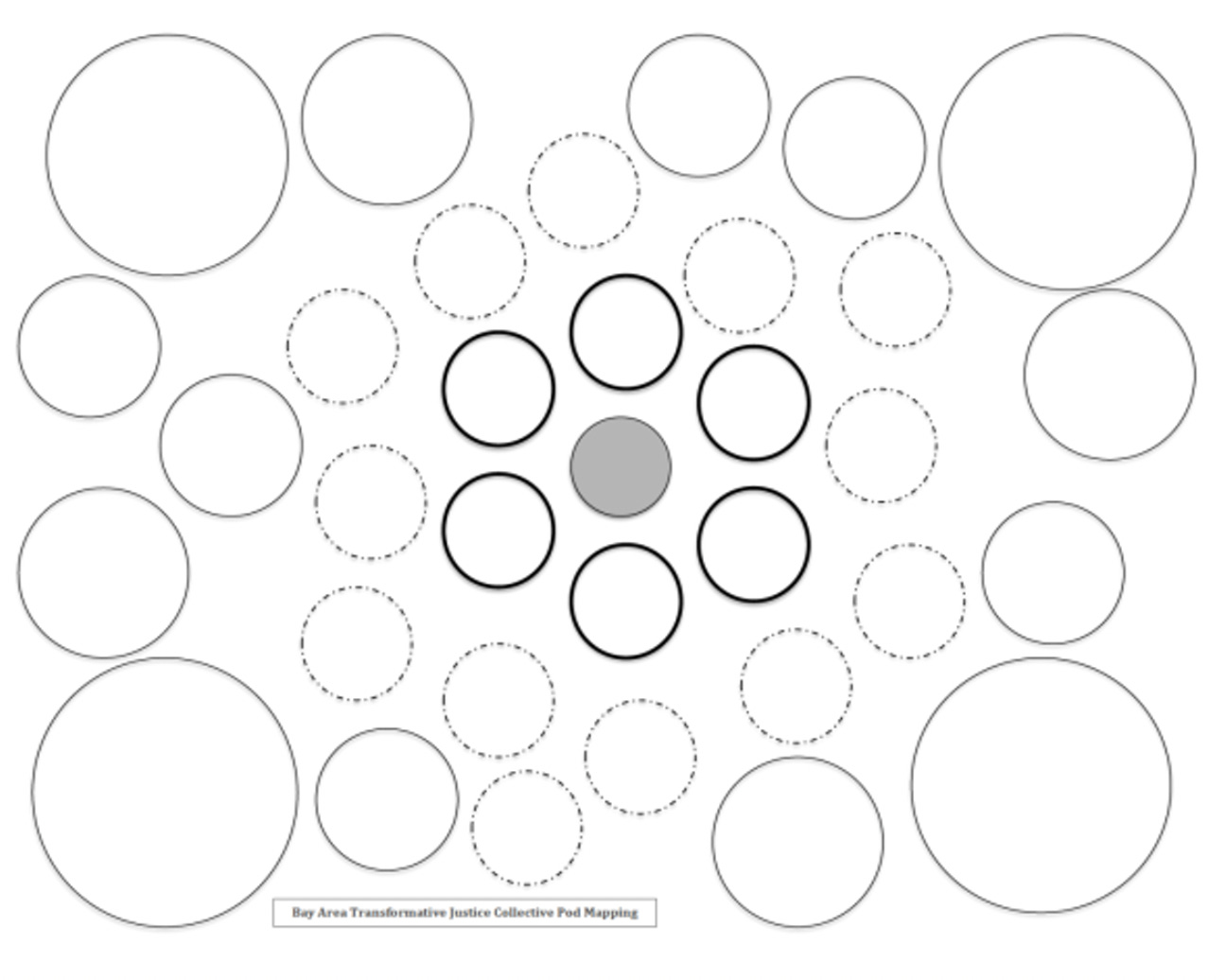There’s confusion and misunderstandings around what community is. It can feel too broad. Too fluffy. Not tangible enough. And have a lack of clarity if we all have our own understanding of what it is.
Some people I’ve spoken to recently have stopped using the term community because of things like this.
The idea of pods feels nice. I’m not sure how I’d feel using it in practice, but it does help me think intentionally about how to design the communities I do nurture.
Source: Pods and Pod Mapping Worksheet - Bay Area Transformative Justice Collective
Prior to this, we had been using the term “community” when we talked about transformative justice, but we found that, not surprisingly, many people do not feel connected to a “community” and, even more so, most people did not know what “community” meant or had wildly different definitions and understandings of “community.” For some, “community” was an overarching term that encompassed huge numbers of people based on identity (e.g. “the feminist community”); while for others “community,” referred to a specific set of arbitrary values, practices and/or relationships (e.g. “I don’t know them well, but we’re in community with each other”); or some defined “community” simply by geographic location, regardless of relationship or identity (e.g. “the Bay Area community”). We found that people romanticized community; or though they felt connected to a community at large, they only had significant and trustworthy relationships with very few actual people who may or may not be part of that community. For example, someone might feel connected to “the queer community,” but when asked who from that “queer community” they felt they could trust to show up for them in times of crisis, vulnerability or violence, they could only name 2 or 3 people.
🌈 Continuous Community Clues are brought to you by Rosieland.



